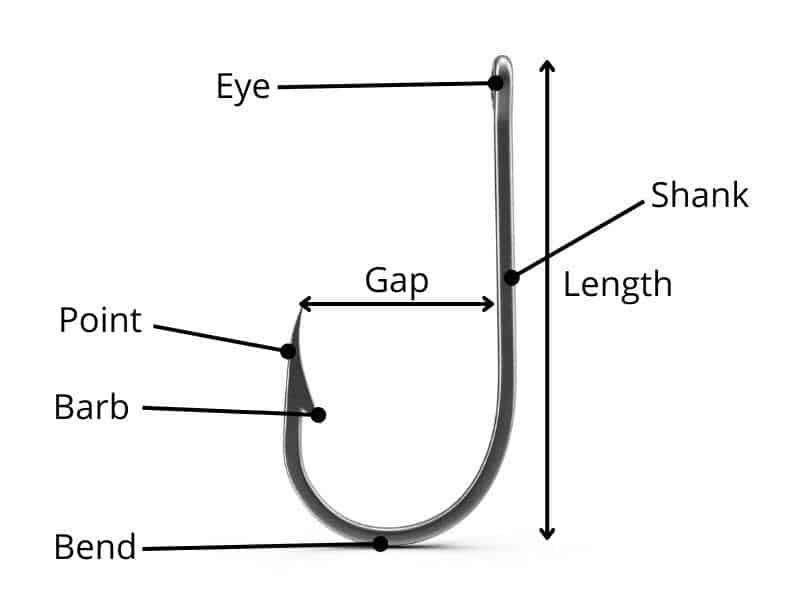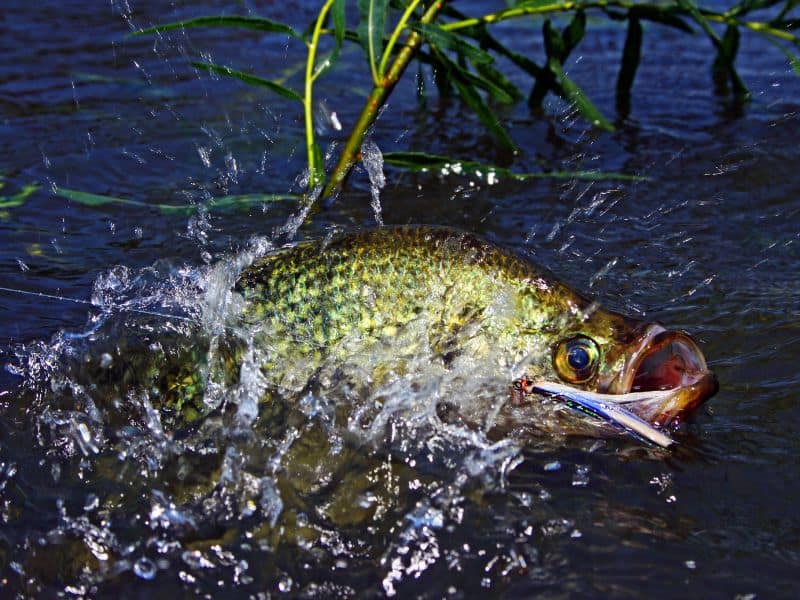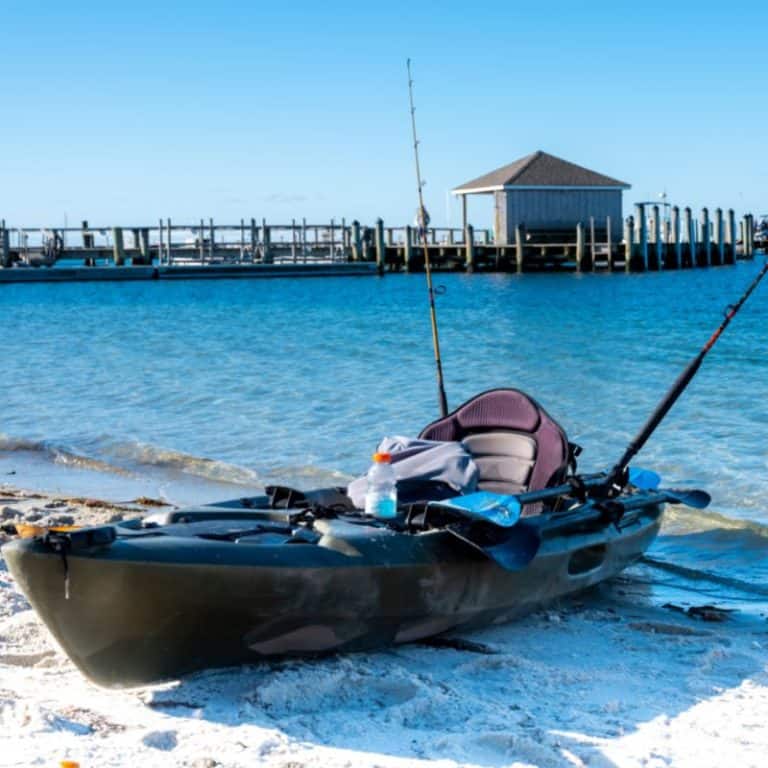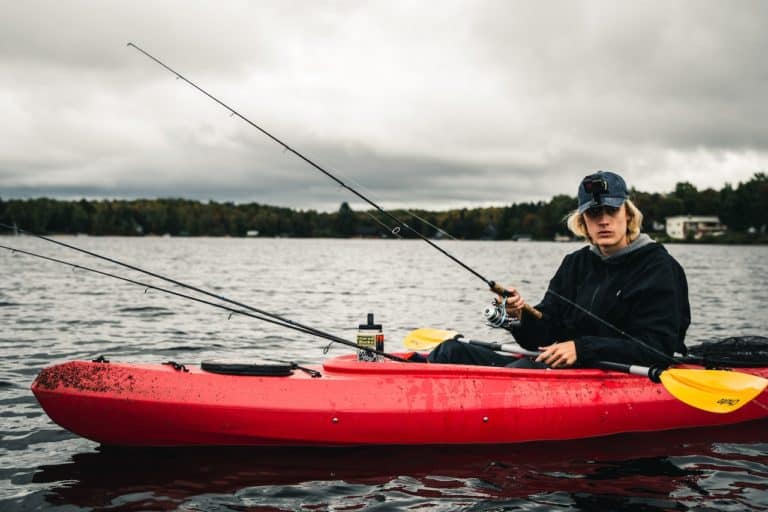Fishing Hook Sizes and Types Explained – Backed with Charts
It can be hard to know what kind of fishing hook and fishing hook size you need.
There are a lot of different types of fishing hooks, and finding the one that is perfect for you will depend on what kind of fishing you want to do.
In this article, I will be going over the main types of fishing hooks and what they’re used for.
I will also be giving some more general information about fishing hooks and how they’re used.
Hook Size Explained
Fishing hook sizes are normally given as fishing hook size (#) or fishing hook aught ( / ).
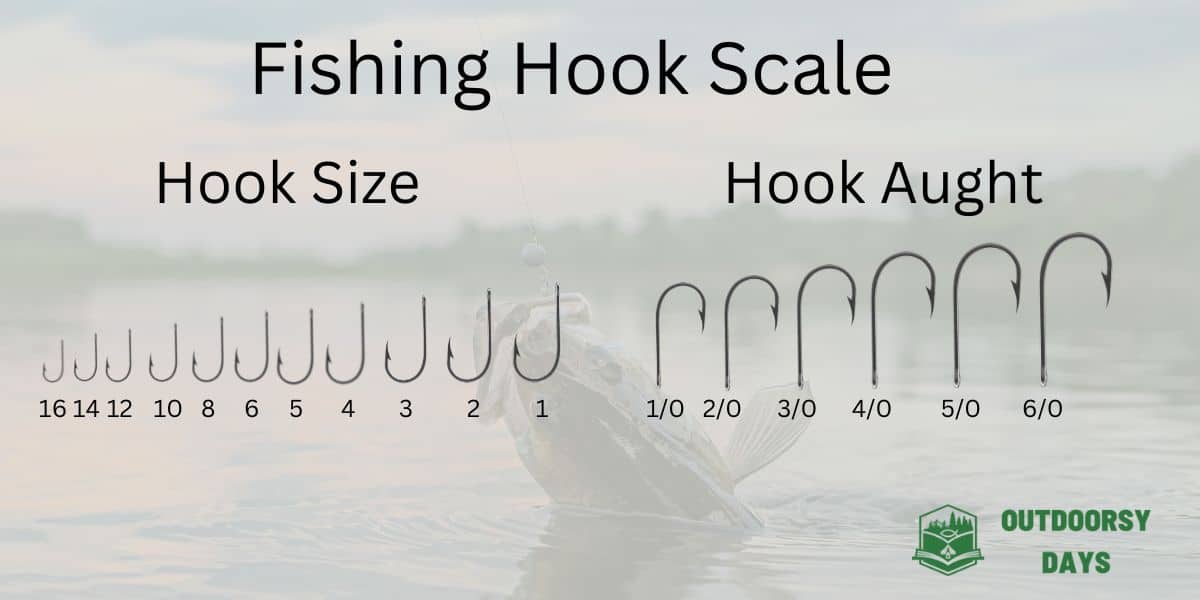
Fish Hook Size
Fishing hook size are normally given by a number like #2.
Here the number #1 is the largest hook and number #32 is the smallest.
Simply said the larger the number, the smaller the hook.
A number #8 hook is not the same for all brands, it’s best to check their hook size chart before buying.
Fish Hook Aught
Fish hook aught sizes are the complete opposite of the fishing hook number sizes.
When the aught gets bigger the hook gets bigger.
Fishing hook aughts are denoted as 1/0, 2/0 etc.
A 3/0 hook from two different brands will not be exactly the same, but similar.
The Most Common Hook Styles
Worm Hooks
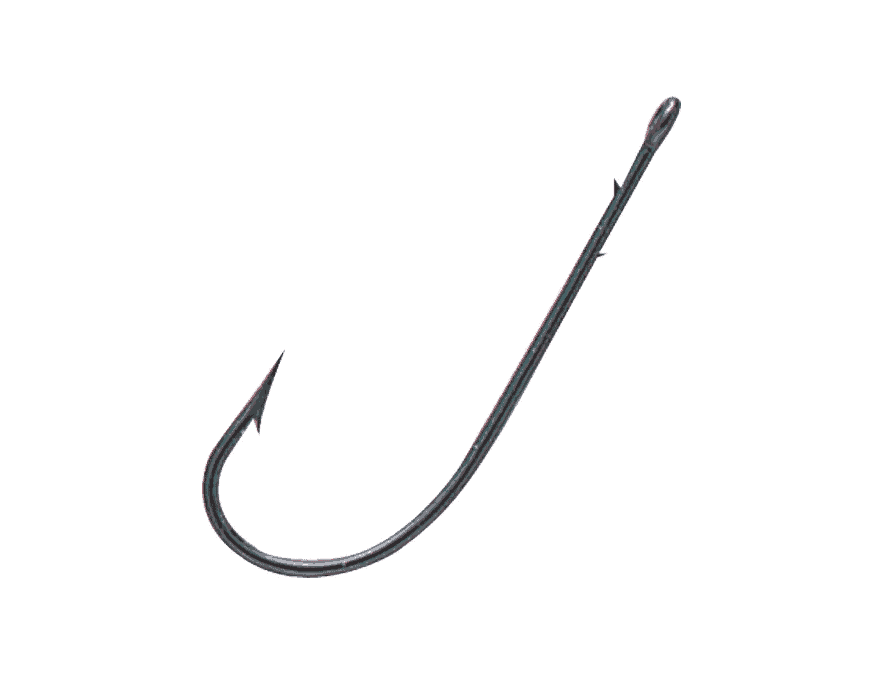
Mustad Worm Hook. Source: Bass Pro Shops
Worm hooks are used to fish with soft plastic bait. The worm hook has a bend just below the eye so weeds don’t get stuck in the gap between plastic worms / bait and the hook.
Worm hooks normally have a wide gap to ensure that the hook sets properly when using bulky plastic baits.
Bait Hooks
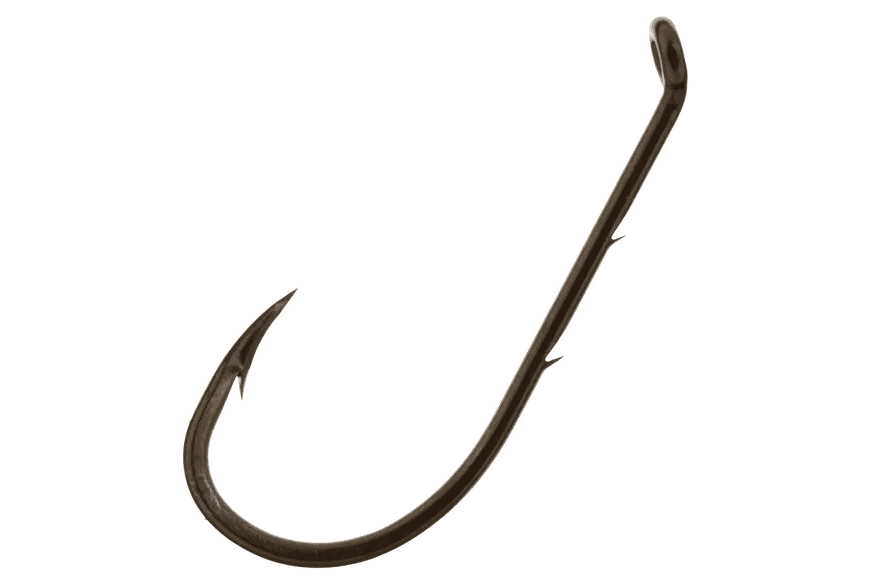
Bass Pro Shop Bait Hook. Source: Bass Pro Shop
Bait hooks are mainly used for live bait as worms, shrimps etc.
A bait hook has barbs on the shank to keep the bait on the hook.
Bait hooks are used for both freshwater and saltwater fishing.
Popular styles of bait hooks include baitholder hooks, octopus hooks, J-hooks, circle hooks, and Aberdeen hooks.
Treble Hooks
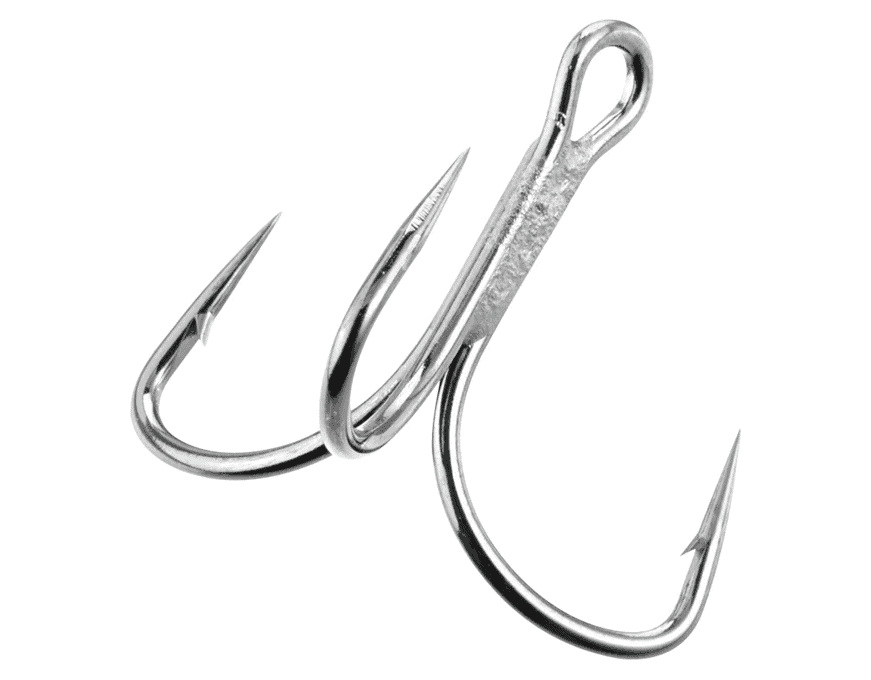
Treble hook from Mustad. Source: Bass Pro Shops
Treble fishing hooks are those fishing hooks which have three points.
With a treble hook, you will secure your fish better to the hook and line than with a normal fishing hook.
It can be very hard to release the catch when you use a treble hook. Treble hooks are not allowed in some places and you should check the local regulations before using them.
Circle Hooks
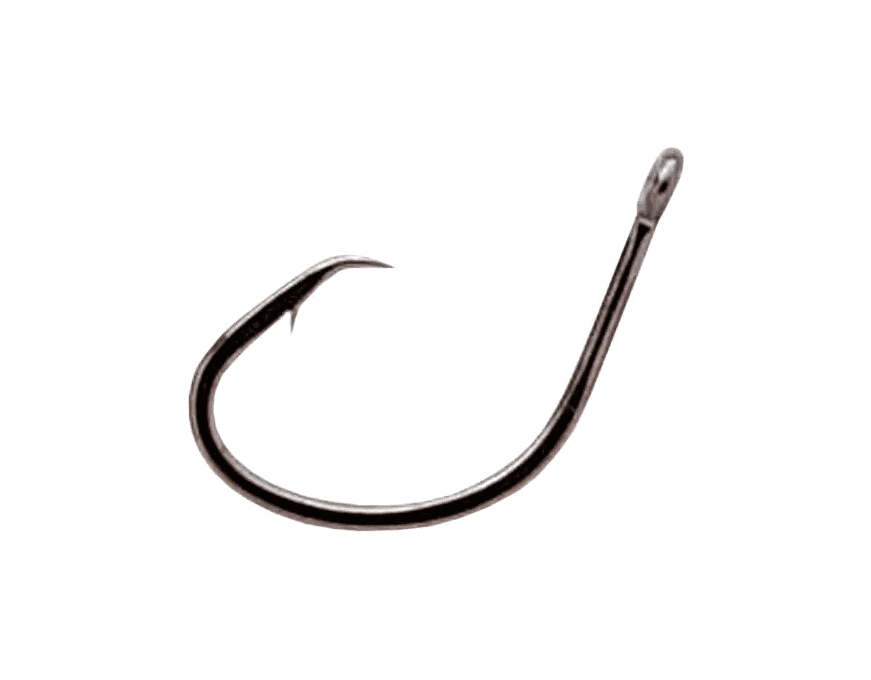
Circle Hook from Gamakatsu. Source: Bass Pro Shop
A circle hook has a larger bend and a more curved point than normal hooks.
The shape makes it more difficult for the fish to swallow the hook.
Circle hooks reduce the chance for “gut hooks” and injury to the fish. Circle hooks are great for catch and release.
Octopus Hooks

Octopus Hook from Gamakatsu. Source: Bass Pro Shop
An octopus hook has the eye bent backwards and inline with the fishing line or leader.
Octopus hooks are designed to present small bait naturally and to set in the corner of the fish’s mouth. The octopus hook is popular for live bait.
Swimbait Hooks
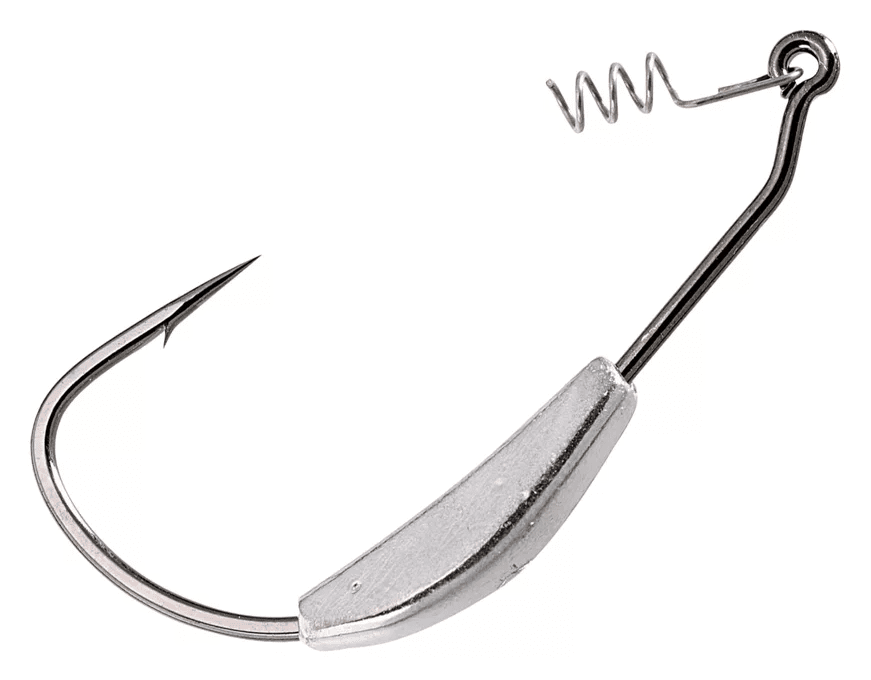
Swimbait Hook from Gamakatsu. Source: Bass Pro Shop
Swimbait hooks are hooks designed to look like bait and it mimics the motion of the bait. The swimming action of the baitfish attracts fish by stimulating their predatory instincts.
Swimbait fishing hooks can be weighted or unweighted. Swimbait hooks come in most shapes like circle hook, Aberdeen hook etc.
Aberdeen Hooks
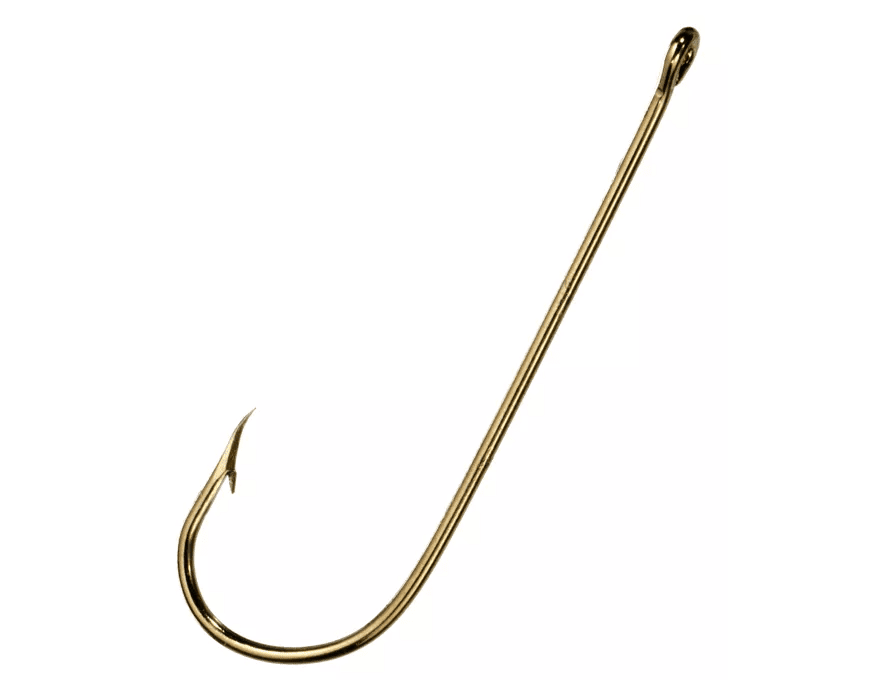
Aberdeen hook from Eagle Claw. Source: Bass Pro Shops
Aberdeen hooks are one of the most popular types of fishing hooks. They are known for their ease of use and strength.
The Aberdeen hook is made for use with bait and is typically used for trolling, casting, or even as a sinker.
The shape of the Aberdeen hook makes it easy to secure small live bait and keeps the bait alive for a long time.
J-Hooks or Jig Hooks
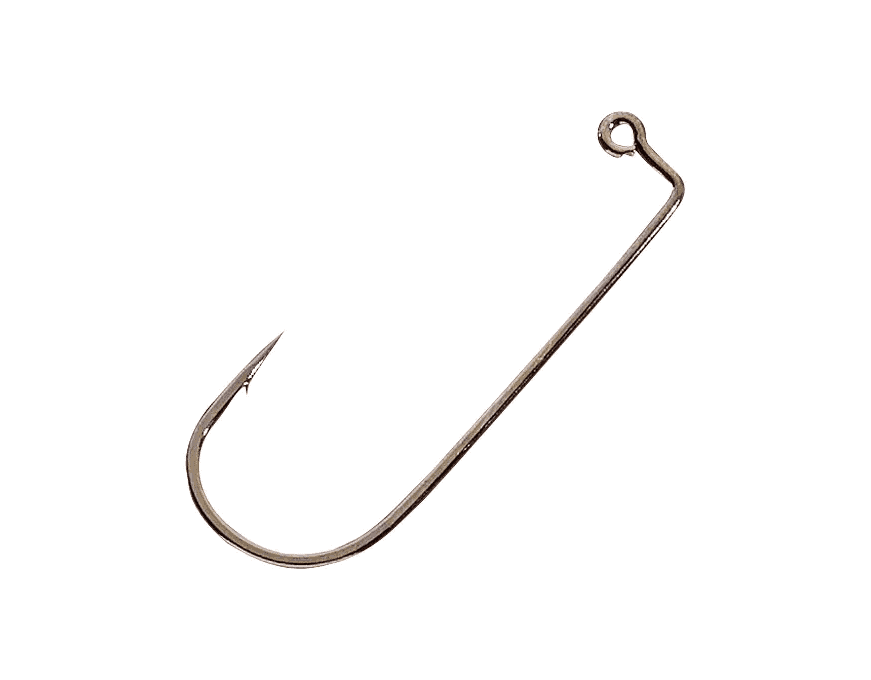
Jig Hook from Gamakatsu. Source: Bass Pro Shop
These hooks are simple and effective. The shanks angle to the eye increases movement when the lure is going through water.
The J hook hooks the fish when it bites the bait and you have a big chance of landing the fish.
Wide Gap Hook
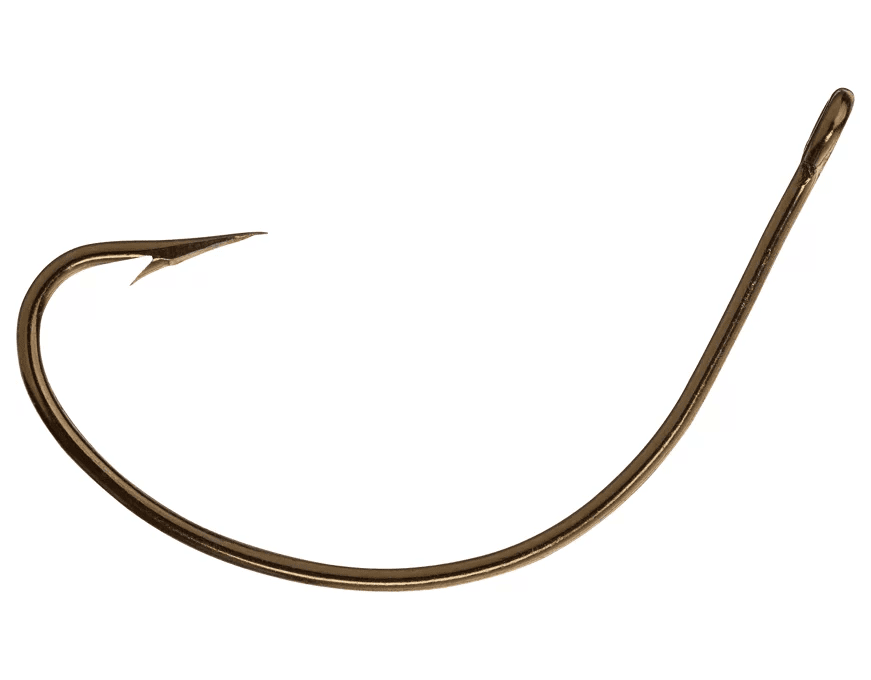
Mustad Wide Gap Hook. Source: Bass Pro Shops
The Wide Gap hooks are designed to be able to accommodate bigger jawbones. Bigger jawbones means bigger fish!
With a wide gap hook it’s also easier to thread the bait onto the hook. If you are using a bulky bait the Wide Gap hook makes it easier for the hook to set properly.
Wide Gap hooks have become more popular the last few years and many professional anglers swear by these.
Fishing Hook Anatomy – Parts Of A Fishing Hook
Eye
The eye is the loop on the top where you will tie the line or leader or attach the swivel.
Shank
The shank is the part that connects the bend to the eye.
Gap
The gap is the distance from the hook point to the shank.
Point
The point is the pointy sharp end where you set your bait or where the hook penetrates the fish.
Barb
The barb is the small hook or spike pointing backwards that prevents the fish from unhooking.
Bend
The bend is the curve between the shank and the point.
Gauge
Gauge is the thickness of the metal or wire of the fishing hook. Larger gauge equals heavier wire and a stronger hook.
Fishing Hook Strength
Fishing hook strength is normally determined by the gauge or wire thickness.
Every hook manufacturer has their own specs for this, but they are pretty similar.
A 1x strong hook means that it has the same strength or gauge as the hook that is one size bigger.
If you have a 1x strong #8 hook it has the same thickness or gauge as a #7 hook.
A 3x strong #8 hook it has the same thickness or gauge as a #5 hook.
Hook Material
Most fishing hooks are made of steel like high carbon steel or stainless steel.
FAQ
How to Sharpen a Fish Hook
There are several ways to sharpen a fishing hook.
- You can sharpen your fishing hook using a regular sharpening stone.
- Fishing hooks can also be sharpened using a regular file. This is normally better for larger hooks.
- You can get a fish hook sharpener like the Cuda Knife Sharpener.
What Size Hook is Bigger, #4 or #6?
Size #4 is bigger than a size #6 fishing hook.
How to Measure Fishing Hook Size?
You measure the hook size by measuring the total length and gap.
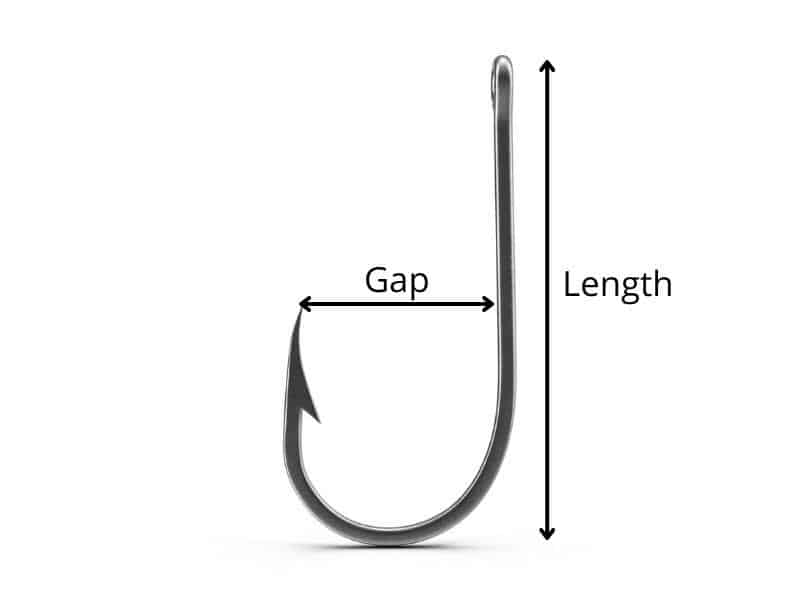
What Size Hooks Should I Get?
That depends on what you are fishing for. See our table above for recommended fishing hook sizes and types.
How Big is a Size 3 Fishing Hook?
A size #3 hook is 0.78in (20mm) long and the gap is 0.51in (13mm).
How Many Types of Fishing Hooks are There?
There are many different types of fishing hooks available on the market today, with each type of hook designed for a specific type of fishing.
The main types of freshwater hooks are spin-cast lure hooks, bait-cast hooks and fly-cast hooks.
For saltwater fishing the main hook types are circle hook, j-hook or treble fishing hook.
When to Use a Circle Hook?
Circle hooks are designed so that it is difficult for the fish to swallow the hook. They are designed to catch on the inside of the fish’s cheek instead of emerging from the front of its mouth.
In addition, the barb on a circle hook is often flattened so that it is less likely to damage the fish’s mouth.
Circle hooks are therefore ideal for when you want to release the fish. The circle hook reduces the chance of the fish getting injured or the fish swallowing the hook (gut hooks).
What are the Most Common Fishing Hook Sizes?
There are a variety of different sizes of fishing hooks. The most common sizes are the size #8, #10, and #12.
Size #10 is the most common size in freshwater fishing, while size #12 is more common in saltwater fishing.
How do you know what size fishing hook to use?
There is no exact guide for fishing hook sizes, but there are a few things to keep in mind when picking out the perfect one for the job.
First, you’ll want to choose a hook that is large enough to easily catch fish without becoming too large and cumbersome on your line.
Each manufacturer normally has their own chart for fishing hook sizes and it can normally be found on their website.
Choosing a fishing hook can be somewhat of a trial-and-error process, but by knowing what to look for in terms of size and style, you can increase your chances of catching that ‘perfect’ fish!!
What is the best knot for a fishing hook?
The best knot for a fishing hook is the improved clinch knot.
This knot is easy to tie and can be adjusted to different sizes of hooks and lines.
See the video below for how to tie an improved clinch knot.
Will Fish Bite if They See the Hook?
A lot of people think that fish will not bite if they see the hook, but that is not true.
Fish will bite even if they see the hook.
Why do People Fish with Barbless Hooks?
Anglers often use barbless hooks if they plan to release the fish back into the water where it was caught. The barbless hook does less damage to the fish.
Since the hook does not have barbs you are more likely to lose it. If you are using live bait it’s a bigger chance that you will lose the bait while fishing.
Barbless hooks come in all types like circle hook, Aberdeen hook etc.
You can also remove the barb on your barbed hooks with a file.
How do You Remove a Fish Hook?
To remove a fish hook without injuring yourself or the fish can be tricky. Some hooks (like a circle hook or wide gap hook) are easier to remove than others.
Treble hooks can be very difficult to remove and can cause a lot of damage to the fish. Do not use a treble hook if you are doing catch and release fishing.
You can also use a hook removal tool. Your local tackle store can recommend a good tool for you.
This video shows how to remove hooks from deep-hooked fish with minimal harm.
What size fishing hooks for crappie?
The size of the hook you use to catch crappie depends on the size of the fish.
The best fishing hook sizes for crappie are #2, #4 and #6.
If you are fishing for small crappies you should go for a size 6 hook.
For larger crappies go for size #2 fishing hooks.
What Size Hook is Best for Bass?
When it comes to fishing, size matters. You want to make sure that the hook you use is the right size for the fish you are trying to catch.
Most of the time, fishing hook size #1, 1/0 or 2/0 is perfect for catching bass.
However, if you are trying to catch a largemouth bass, you may want to use from a size 1/0 to a 6/0 hook.
Remember that the size of the hook should be determined by the size of the fish you are trying to catch.
The pros use the smallest hook they can without compromising the hook’s effectiveness once the fish is set on the hook.
If you are using worms or soft plastic for bait most anglers use fishing hook size between 2/0 and 4/0.
If you are thinking about bass fishing from a kayak check out our article on Best Fishing Kayaks Under $1000.
What Fishing Hook Sizes are Good for Bluegill?
Most anglers use hook size #6 to #12 when fishing for bluegill.
Size #6 to #10 are most effective, but it’s important to make sure that the size of the hook you use is appropriate for the size of the fish you are trying to catch.
The size #8 hook is good for catching big bluegill, while the size #6 hook is better for catching small bluegill.
Live bait (especially worms or nightcrawlers) are best for catching Bluegills.


